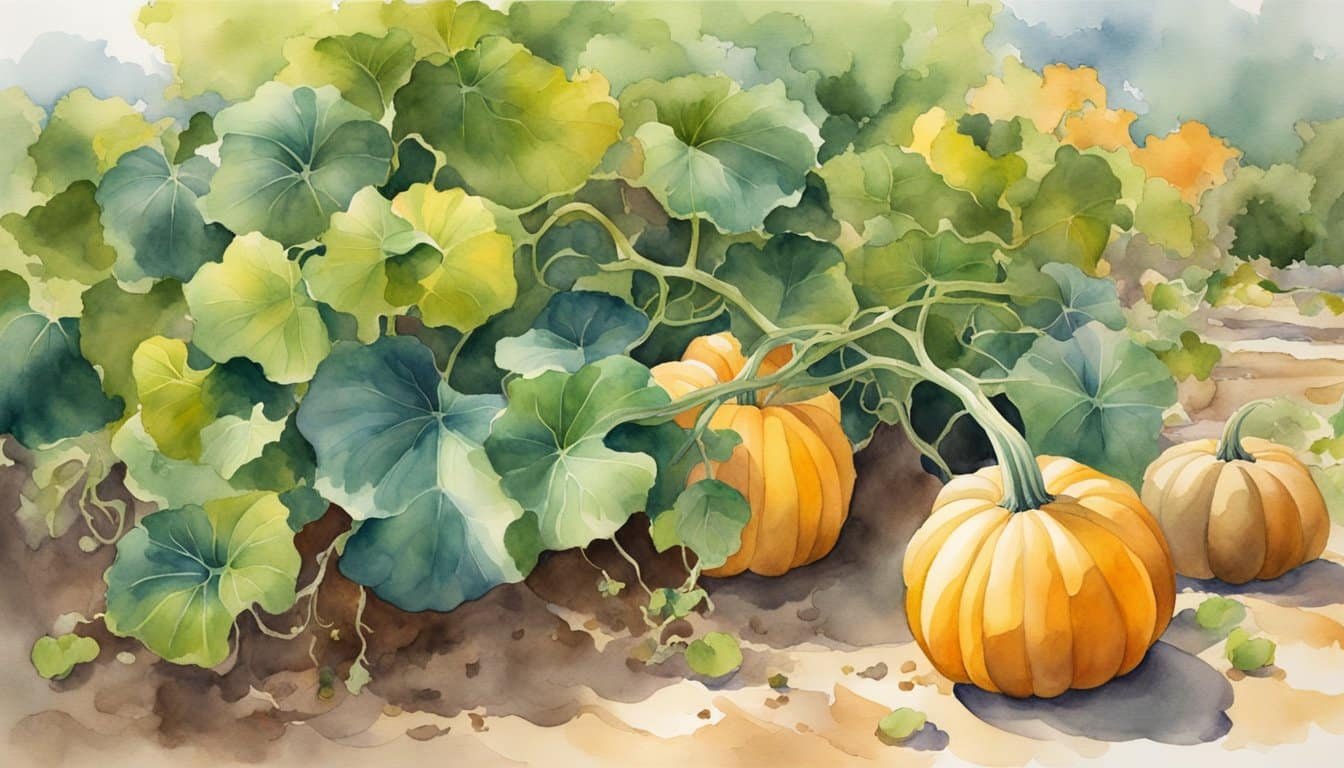Starting with the Right Seed
Embarking on the adventure of growing a giant pumpkin begins with the all-important decision of choosing the right seed. Selecting a top-quality seed with a proven lineage is pivotal to nurturing a pumpkin that will not only grow to an immense size but also have the strength and durability to thrive through the growing season.
Choosing Quality Seeds
One must begin by procuring seeds renowned for their propensity to produce large fruits; varieties such as ‘Dill’s Atlantic Giant’ are celebrated in the giant pumpkin community. Gardeners often acquire seeds from champion pumpkins, as these are likely to contain the sought-after genetic composition necessary for growing a colossal pumpkin. Websites like BigPumpkins.com offer a marketplace for these elite seeds. When selecting seeds, it is essential to look for ones that are plump, free of cracks or damage, and from a supplier with a reputation for quality.
Understanding Pumpkin Genetics
The genetics of pumpkin seeds play a crucial role in the potential size of the pumpkin. Varieties such as the ‘Atlantic Giant’ are specifically bred for their capacity to yield massive pumpkins, sometimes weighing over a ton. Knowledge of a seed’s lineage, available from reputable sources or competitions such as the Pumpkin Nook, can provide insight into the expected growth potential and characteristics of the pumpkin.
Prepping Seedlings for Planting
Once the ideal seeds are in hand, the next step is preparing them for planting. Initiating growth in a controlled environment such as a peat pot ensures that the seedling is protected and can be transplanted without disturbing the roots. Peat pots are advantageous as they can be placed directly into the soil, minimizing transplant shock. It is important to grow seedlings indoors until two sets of true leaves have developed, which indicates they are ready for the outdoor garden. Prior to transplanting, one should prepare the soil with ample nutrients to give these future giants a robust foundation to unleash their full potential.
Optimal Growing Conditions
To achieve the colossal size of a giant pumpkin, a gardener must provide the plants with a tailored environment that caters to their specific needs. Each aspect, from soil nutrients to sunlight, plays a pivotal role in nurturing a pumpkin that can tip the scales.

Soil Preparation and Nutrition
A successful giant pumpkin begins with the soil preparation. Performing a soil test is crucial to understand the baseline of nutrients present and to tailor the additions of compost, manure and fertilizers accordingly. Soil rich in nitrogen, potassium, and phosphorus is essential for pumpkin growth, but balance is key; too much nitrogen can hinder fruit development. The soil must be well-drained yet retain enough moisture to maintain a good balance. Amend the soil with plenty of compost or aged manure to improve its fertility and structure.
Water and Sunlight Regimen
Giant pumpkins thirst for consistent water, and maintaining uniform soil moisture is critical. They require full sun exposure to flourish, so positioning them in a location with full sun for most of the day is essential. Proper spacing is also key, as pumpkins need room to spread. Use a shade cloth during the peak sun hours if necessary, especially in very hot climates. Adjust watering based on the weather; excessive water can dilute nutrients and lead to root rot, while too little can stress the plant. Keep in mind that as the plant progresses, water demands may change.
Protecting Plants from Extremes
To shield giant pumpkins from extreme conditions, growers may utilize techniques like cold frames or shade cloths. A cold frame can protect seedlings from late spring frosts, while a shade cloth can prevent sunscald during intense heatwaves. Monitoring the average last frost date is important to time the planting and avoid damage from frost. Gardeners might also use mounds of soil to enhance drainage or row covers for added warmth. Keep an eye on the long-term weather forecast during the growing season to anticipate and protect against unexpected weather events.
Care and Cultivation Techniques

Growing a giant pumpkin involves meticulous care and precision. From understanding the right pruning strategies to managing pests and diseases, there’s a science to nurturing these colossal fruits to their maximum potential.
Pruning for Growth
Pruning is integral for channeling a plant’s energy into its main vine, the powerhouse for pumpkin growth. The process starts by selecting a strong, healthy main vine. Gardeners should prune the lateral vines near the base to prevent the pumpkin vine from diverting nutrients away from the pumpkin itself. As the pumpkin develops, keeping only the most vigorous vine and removing competing ones ensures that all nutrients and energy focus on increasing its size.
Pollination and Harvest
Hand-pollination can give growers more control over the growing process. This involves transferring pollen from male flowers to female flowers, which can be recognized by the tiny fruit at their base. It’s best done early in the morning when pollen is most viable. As pumpkins grow, using shade can protect them from intense sunlight. Harvesting usually occurs before the first frost, with a few inches of stem left intact to avoid rot and prolong shelf life.
Pest and Disease Management
Pests and diseases can decimate a pumpkin crop if left unmanaged. Floating row covers can protect young plants from early pest infestations. As the pumpkin grows, regular inspections can catch issues early on, when they’re easiest to control. Insecticides and fungicides may be required but should be used carefully to avoid harming beneficial insects. A combination of kelp meal and proper fertilization using nitrogen, phosphorus, and potash, tailored to the plant’s growth stage, can also bolster the pumpkins’ natural defenses.

